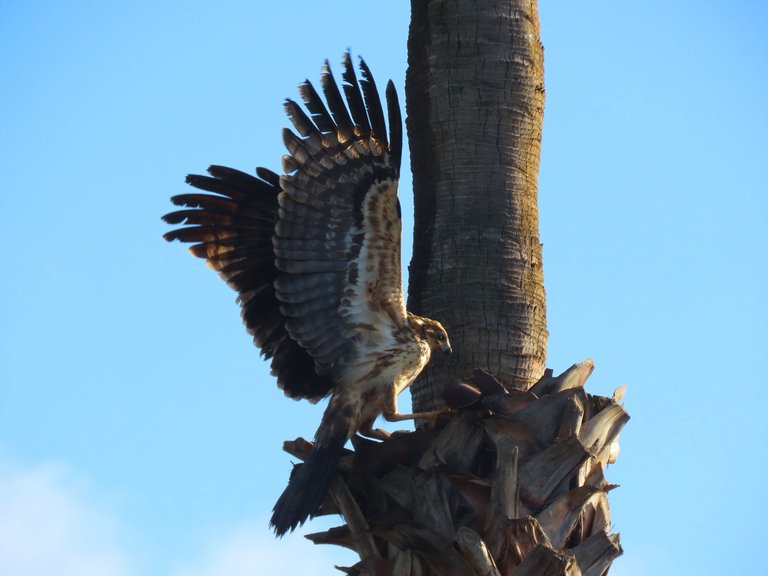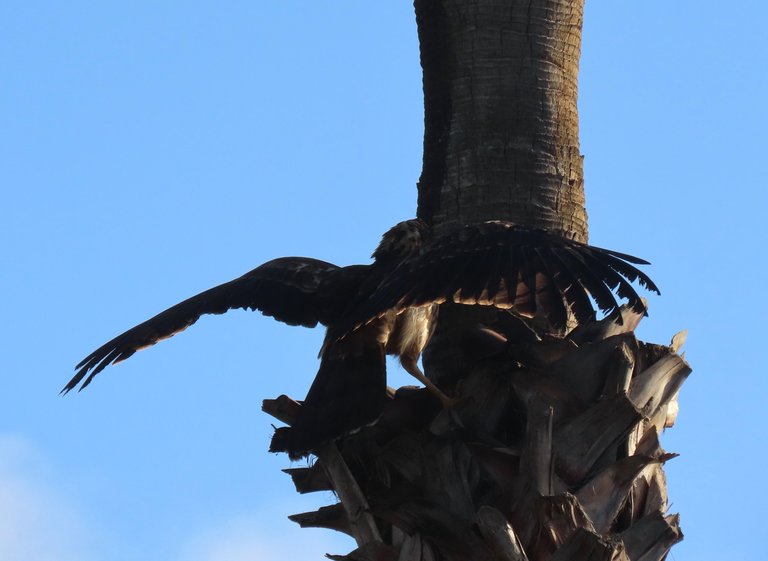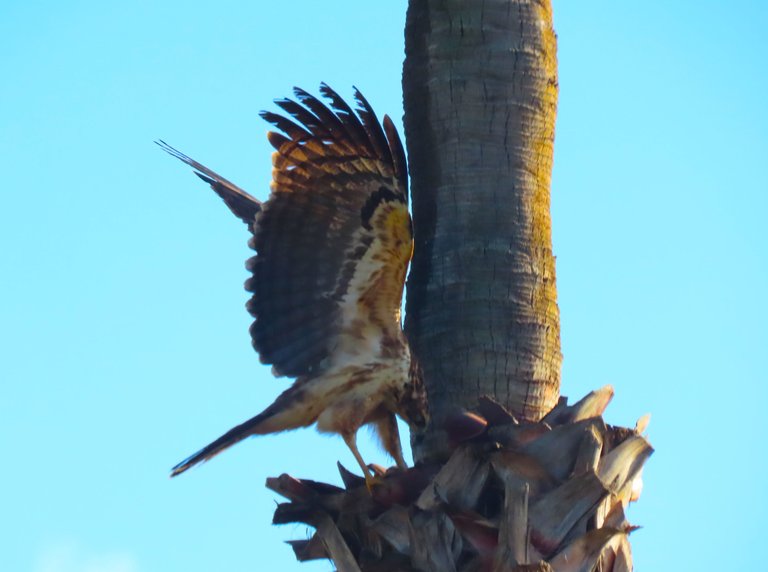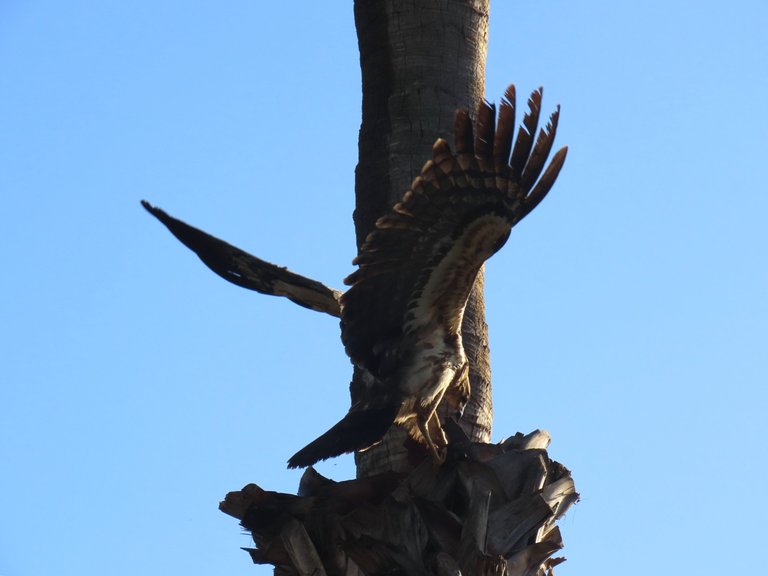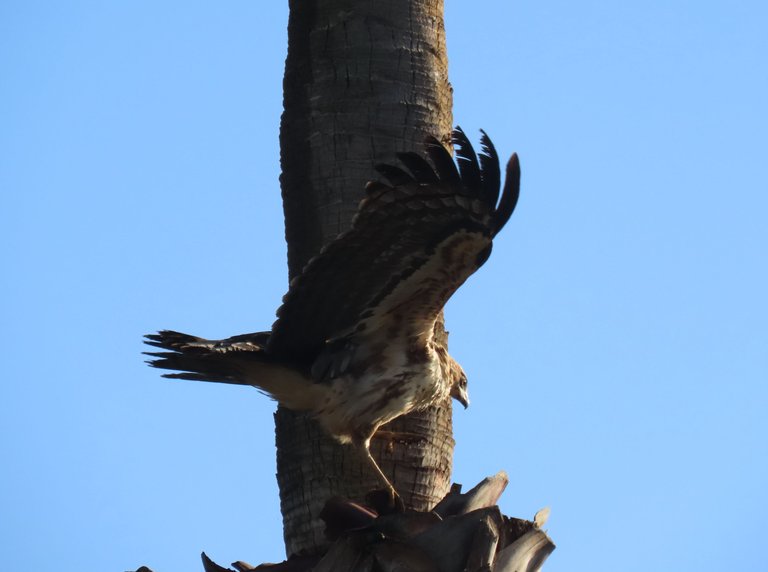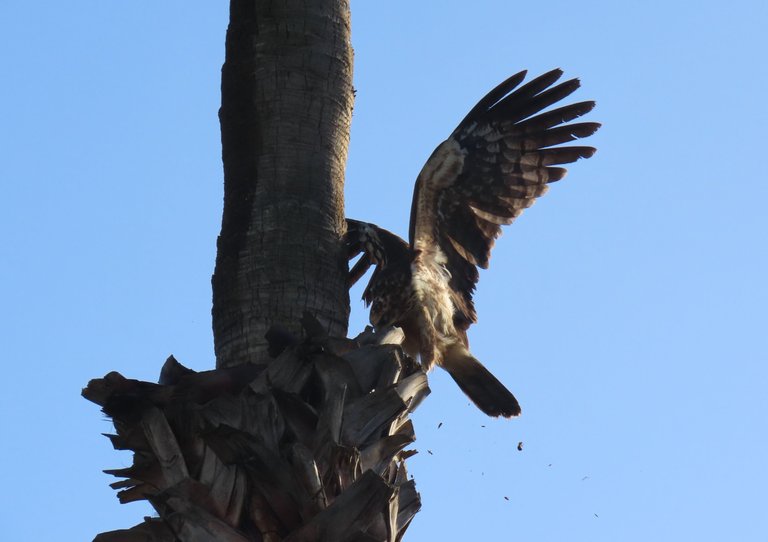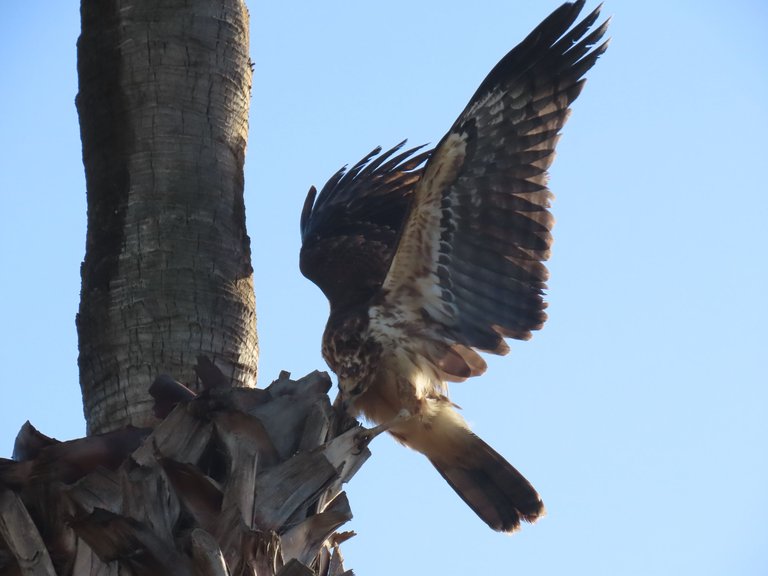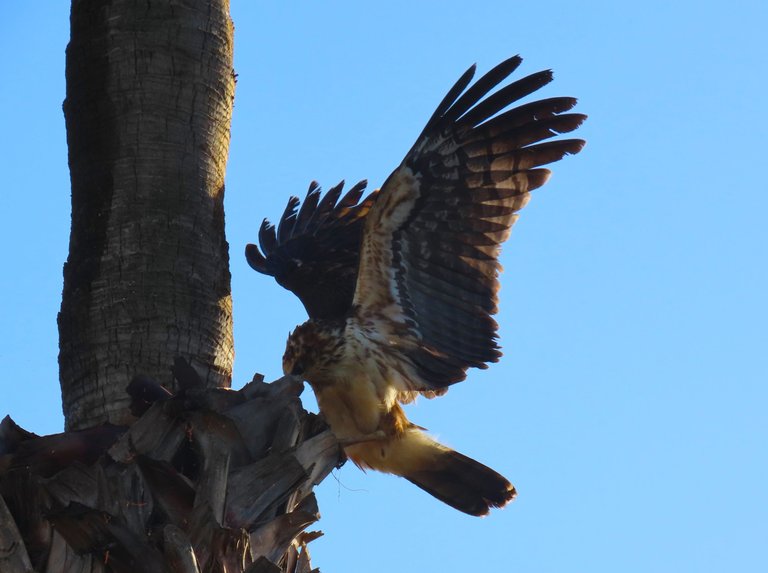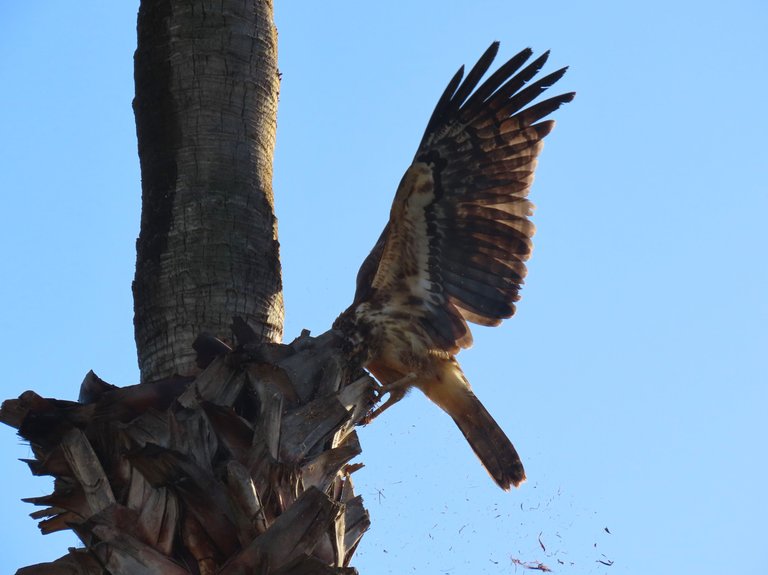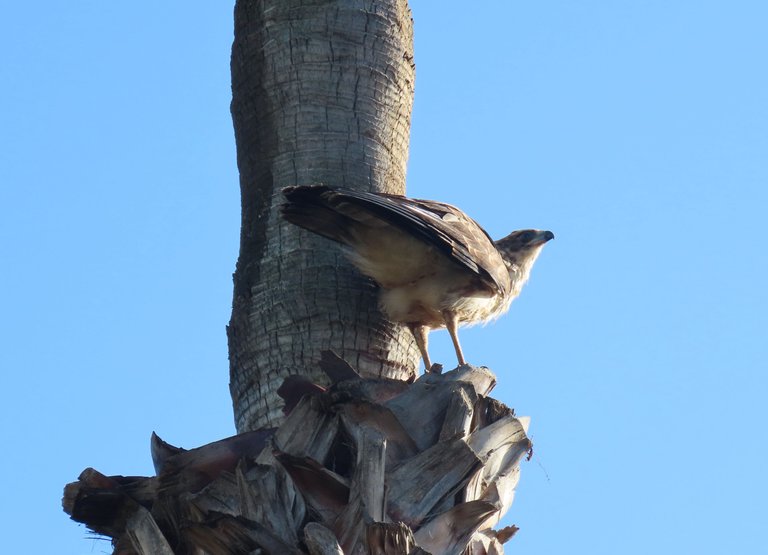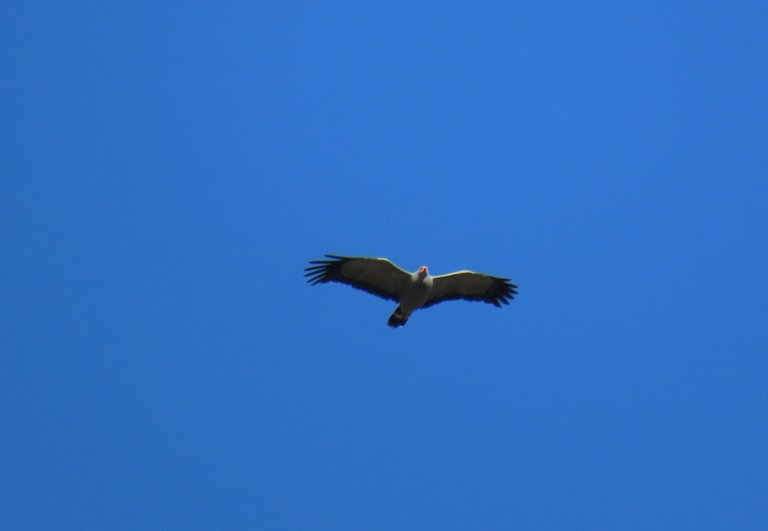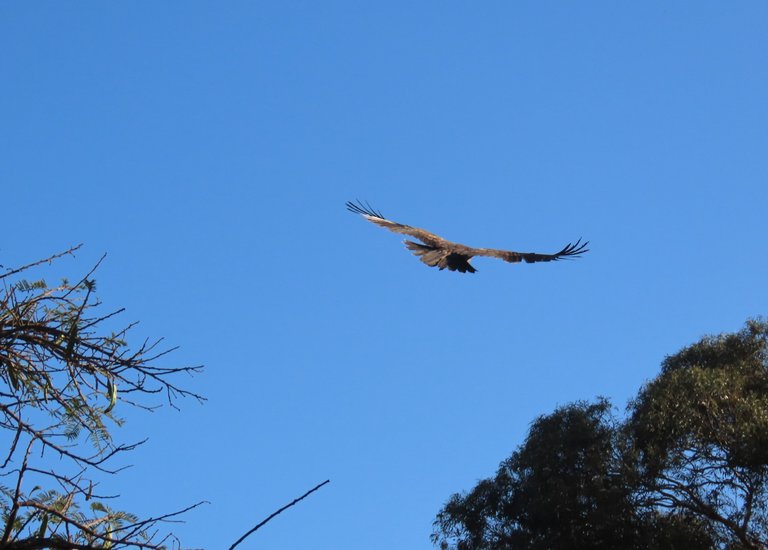Not every day that you will see something like this.
A juvenile African Harrier Hawk (Polyboroides typus) was scratching around for rodent nests on the husks of a high palm tree trunk.
I know that they sit hidden in a big tree to watch for the movements of birds preparing nests and other animals that might have youngsters. Even small dogs are not secure when the hawks are around, and I have had a few innings with them already. But I have not seen this before, as the hawk worked its way around the flat top husks on the trunk of a high palm tree.
You will see that Junior is still a bit inexperienced, as the rodents saw his landing and they must have scattered lower down in the husks.
I will show you step by step about his abortive attempts to capture prey.
Let me take you back to the start, as I saw the hawk flying past and landing on the husks of a tree, as you can see below.
Then he started to inspect the top of the husks.
Carefully, as a strong wind was up.
Now let's watch to see if he could get anything.
Scratching away and hoping to find something.
Here below is some more information about the African Harrier Hawk.
The African harrier-hawk, harrier hawk or gymnogene (Polyboroides typus) is a bird of prey. It is about 60–66 centimetres (24–26 in) in length. It breeds in most of Africa south of the Sahara. The only other member of the genus is the allopatric Madagascar harrier-hawk (Polyboroides radiatus).
The African harrier-hawk is a medium-sized raptor. The upperparts, head and breast are pale grey. The belly is white with fine dark barring. The broad wings are pale grey with a black trailing edge fringed with a narrow white line. The tail is black with a single broad white band. There is a bare facial patch of variable colour, usually red or yellow. Sexes are similar, but young birds have pale brown instead of grey, and dark brown replacing black. An unusual trait of this species is the double-jointed ankles it possesses, which enable it to reach into otherwise inaccessible holes and cracks for prey. A comparable leg-structure and behaviour can be found in the Neotropical crane hawk as well as the extinct Australian Pengana; a case of convergent evolution.
Huh! scratching again, but still with no luck.
He turned to scratch from the other side, but we both looked up, as we heard the call.
A parent came over high up and it was sending out a loud call.
Junior didn't hesitate, as he took off immediately.
And so, my adventure ended, but I was a very happy chappie for being allowed to witness this show. I cannot tell you how happy I get when a scene like this appears. Nobody got hurt and it was all pure magical. I have posted Harrier Hawks before, even a post where a hawk sticks its head into a gap of a house roof, as they are supreme hunters of prey. The harrier hawks also have the ability to climb trees, as they have double jointed ankles. We see nature as a serene and slow-paced setting but let me tell you that things can happen in an instant, and if one is not alert and ready with a camera, then some great opportunities go abegging.
Such is life.
I hope you have enjoyed the pictures and the story.
Photos by Zac Smith-All Rights Reserved.
Camera: Canon PowershotSX70HS Bridge camera.
Thank you kindly for supporting this post.
